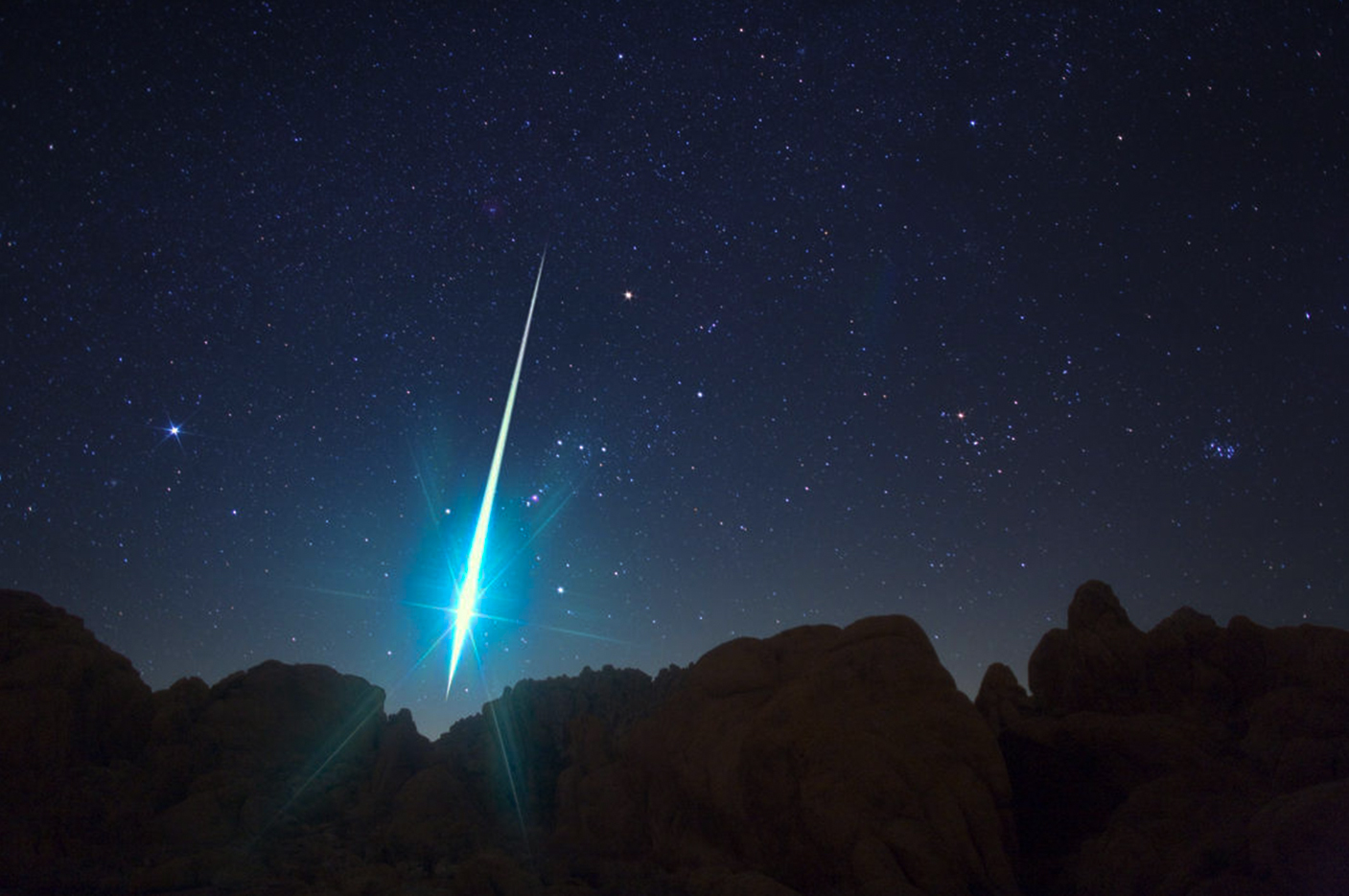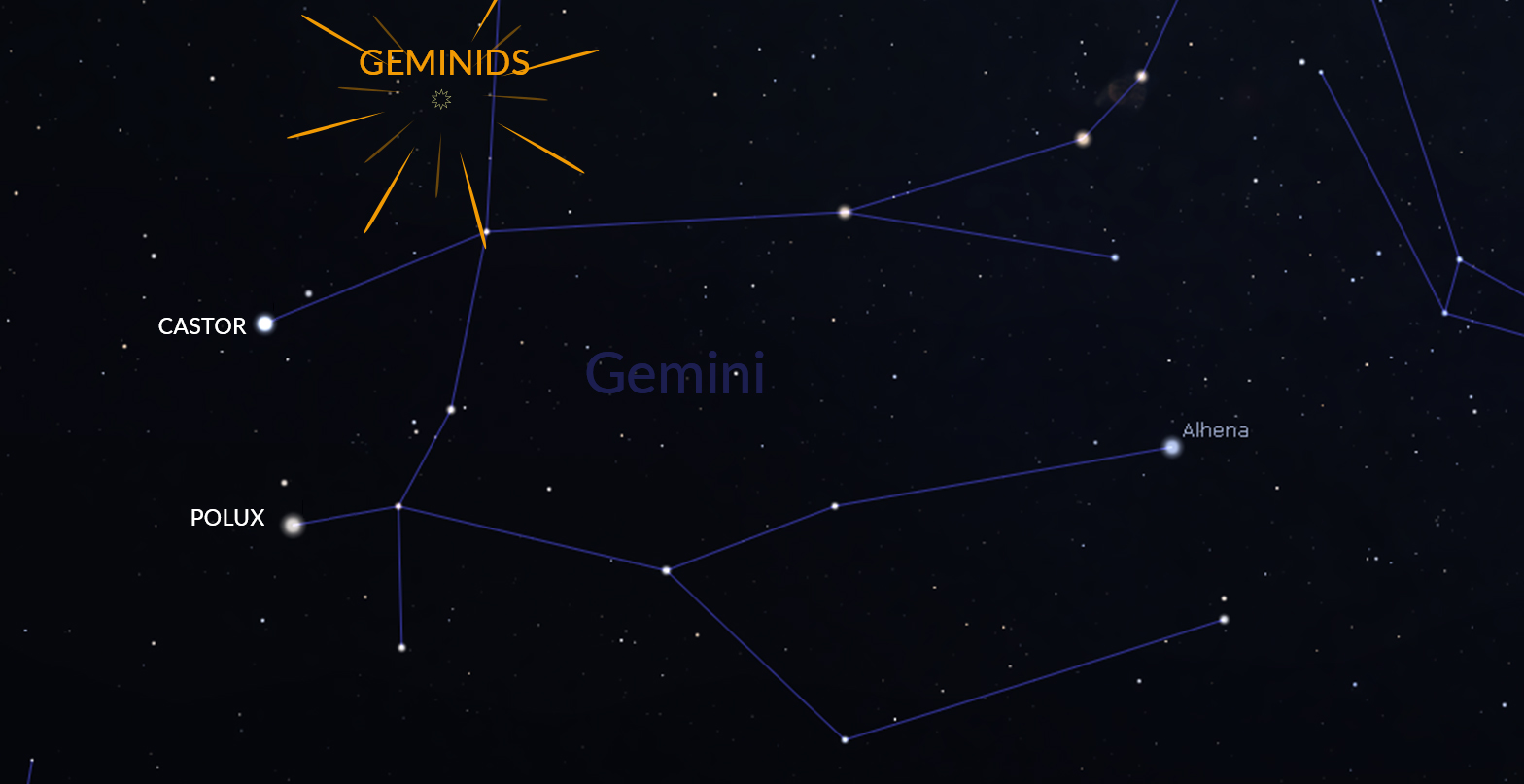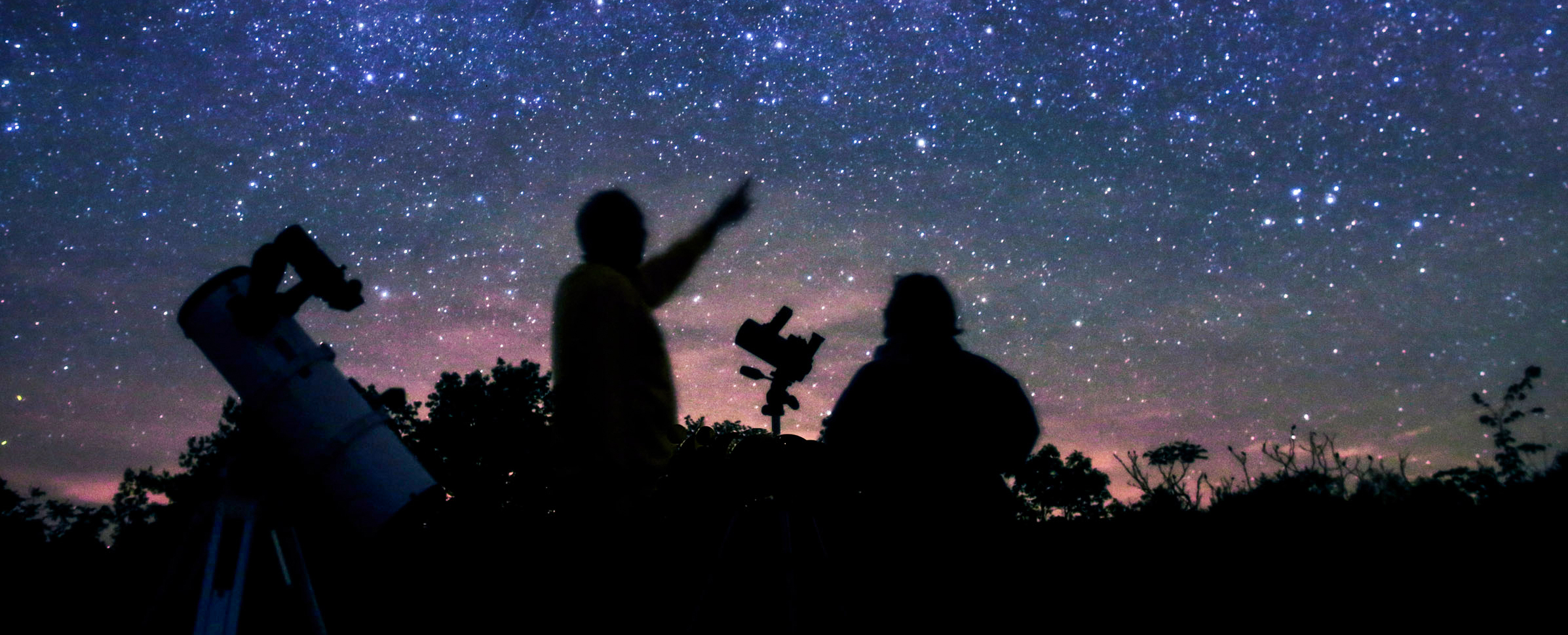
The Geminid meteor shower is the favorite of most meteor observers as it usually provides the strongest display of the year. On the peak night (December 13/14) between the hours of 1:00 and 2:00am local standard time (LST), an observer located in mid-northern latitudes under clear skies has the opportunity to view at least 75 Geminid meteors. If you watch from a rural setting far from city lights then your counts could exceed 100. If watching from urban locations you will be limited to around 50 meteors during this period.
The Geminids are one of the few annual meteor showers that are active all night long. The radiant (the area of the sky where the meteors seem to come from) is located near the bright star Castor (Alpha Geminorum). This star rises in the northeast near 1800 (6pm) LST as seen from mid-northern latitudes. At the time a few Geminid meteors may be seen streaking slowly upward toward the zenith or shooting parallel to the northern or southeastern horizons. These early Geminids are special as the geometry at this time of night only allows them to skim the top of the atmosphere. Therefore these meteors will last longer and will produced longer streaks in the sky compared to Geminids seen later on in the night. These meteors are referred to as “earthgrazers”. The number of meteors seen at this time will be low, but they will be impressive nonetheless.

As the night progresses the Geminid radiant will rise higher into the sky. The meteors will seem quicker and shorter than those seen at dusk. Their numbers will also increase with each passing hour. The radiant will lie highest above the horizon near 0200 LST. This will be the best time to view activity as the radiant will lie overhead and Geminid meteors will be shooting downward in all directions. This is also the only good time to view the Geminids from the southern hemisphere. As seen from latitude 25S, the radiant will lie 1/3 the way up in the northern sky. Viewers there will only be able to see half the activity compared to mid-northern locations. As the morning progresses the radiant will set into the western sky and rates will fall with each passing hour. As dawn breaks the radiant will lie low in the west.
Your average Geminid meteor is usually as bright as the brighter stars, 2nd or 3rd magnitude. Of course it all depends on the darkness of your sky. Rural observers will be able to see more faint meteors while urban observers are limited to seeing only the brighter ones. Brighter Geminid meteors can produce a color, usually yellow or orange. Fireballs (extremely bright meteors) are common during the Geminids and some of these are intensely green.
The Geminids are also easy to photograph as they are bright and slower moving than most meteors. Meteors will appear as straight streaks on your pictures. Star trails are curved. Any camera that can expose for a minute or longer can capture meteors. The best area to aim a camera is not straight up but toward the darkest direction available with the camera aimed half-way up in the sky.
People often ask where to look in the sky for meteors. The first thing I tell them is to be comfortable and don’t stand and watch. Sit in a comfortable chair aimed toward your darkest direction. Meteors will appear in all areas of the sky but are best seen away from bright lights that affect your vision. Also, don’t look straight up, rather look roughly half-way up in the sky, high enough to avoid hills or trees that may block your view. Meteors will appear in bunches so there will be periods of no activity and times of high activity. This is why we suggest watching for as long as possible. This will assure that you will see both slow and strong activity and not just some short period of inactivity.

Not all the meteors you see will be members of the Geminid shower. There are also other weaker minor showers active this time of year in Orion (Anthelions), Monoceros (Monocerotids), Vela (Puppid-Velids), Hydra (Sigma Hydrids), and Leo Minor (December Leonis Minorids). These meteors will appear differently than the Geminids as they possess different velocities and will have different tracks across the sky.
If the night of December 13/14 is cloudy don’t despair. The Geminids are strong for several nights, most notably the weekend of the 12/13. So if Sunday night/Monday morning look to be cloudy then watch earlier. Monday night/Tuesday morning will be good too but weaker than rates seen over the weekend.
The Geminids reappear each year in mid-December. Unfortunately the display in 2016 will occur with a full moon in the sky, severely limiting the number of meteors seen next year. Not until December 2017 will the Geminids appear under favorable conditions again. So don’t waste this opportunity to see an impressive display of natural fireworks!
 American Meteor Society
American Meteor Society
Thanks for the detailed write up. Couldn’t see them in the southeast usa last night. Your article was the most detailed I’ve found and mentioned what I was looking for. Going to watch them tonight. Cheers!
My sister and I saw the Geminids on Sunday 12/13/15, 2130-2300 CST, in a fairly dark sky under very clear conditions near Kerrville, Texas. Meteor rate was about 60 per hour, comprised mostly of bursts of 2-4 in quick succession. Meteors were generally dim and short-lived, though a handful of bright ones appeared. Very few left visible trails.